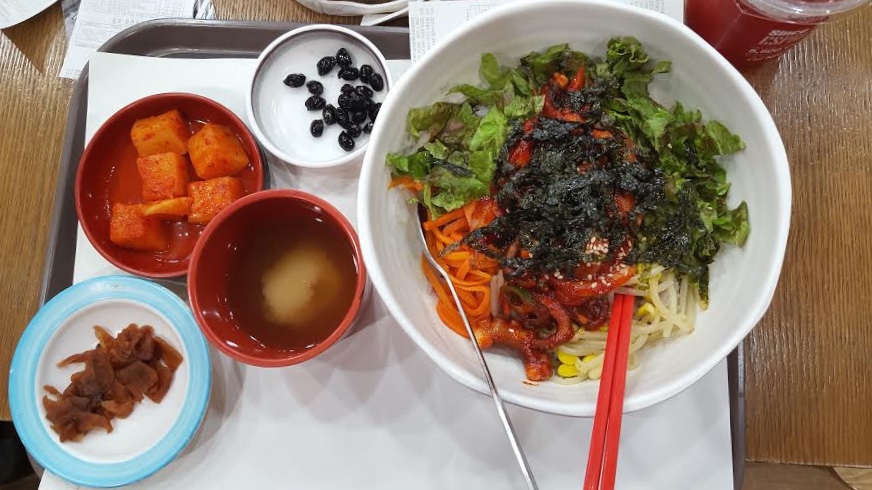
By Lisa Qian
If there’s one thing a visitor to South Korea needs to know about the food, it’s that the definition of “spicy” can and will differ from the American foray into piquancy. I learned this the hard way, when, upon taking one bite of my first meal in Seoul, a bowl of seafood bibimbap, I felt both my eyes and nose run before I could frenziedly gulp down half a glass of water.
Whether it’s kimchi or bean paste, Korean food is spiced liberally, making it almost inedible for the novice diner. Heed warnings from the waitstaff.
All sit-down restaurants will begin with banchan, the Korean equivalent of appetizers. What’s served differs, but a near-guarantee is kimchi, followed by tofu and pickled vegetables. Typically, banchan dishes are robustly flavored, so they’re best eaten with rice.
Korean barbecue is available stateside, but having it in Korea, of course, is an entirely different experience. With plates upon plates of raw meat, seafood, mushrooms, noodles and vegetables, there’s a plethora of options to dunk into the boiling hotpot broth. All cooks fairly quickly–the beef shrivels within seconds, an indication that it’s ready–and has been infused with the broth’s flavor. Bibimbap is another staple. Essentially a rice bowl with vegetables, meat and flavoring paste, the ingredients are left to the diner to mix into a thick paste. There are usually several options—pork, beef, vegetarian or seafood.
Beyond traditional restaurants, never underestimate the quality of markets, cafes and food courts. A trip to Seoul wouldn’t be complete without a visit to a café, especially since café culture dominates the city. The Gangnam district is a café hotspot in particular, per Psy’s hit single, and there is enough selection there to satisfy virtually anyone. Café themes range from studying, essentially a library, but with waitresses who bring tea or coffee every hour, to Hello Kitty to canine friends (yes, there are dogs waiting to be petted). In the summer, when the weather makes it uncomfortable to down hot drinks, try “ade,” sparkling water combined with mashed fruit and sometimes a hint of added sugar. It’s delicious and refreshing, perfect for rejuvenation on a 90-degree day. Ade is served in both cafes and street markets and flavors include strawberry, mango and whatever fruits are seasonally available.
Public markets are another excellent place to sample Korean food. Most of Seoul’s markets have at least one section dedicated to food—beyond the seeming messiness of the place, in a makeshift tent or sitting on plastic stools, one can enjoy perhaps the tastiest of meals. Seafood pancakes, for example, consisting of thick fried dough, green onions, squid and other options, are delicious and the chef makes them fresh, frying them on large hotplates.
Visiting Korea is an easy way to gain a few pounds, but the best part of dining is that those pounds will go straight to the soul.
Lisa Qian ’19 is a freshman in Silliman College. Lisa can be reached at lisa.qian@yale.edu